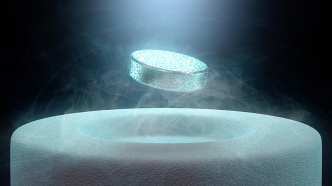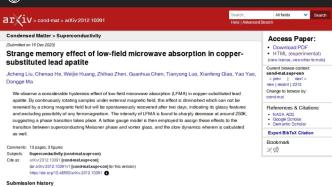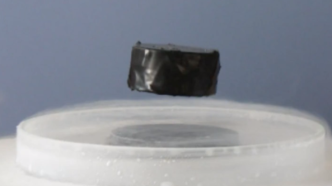
·If it is said that someone has reproduced the magnetic properties of this material, it can be established. It is completely untenable to say that someone has reproduced the room-temperature superconductivity of this material.
Recently, room temperature and normal pressure superconductivity announced by South Korean scientists has become one of the hottest topics in the world. Based on my professional knowledge and the interpretation of the superconducting experts I saw, I wrote two articles ( Korean scientists claim to achieve room temperature superconductivity? But the way they do things proves that they are unreliable ) ( Korean scientists room temperature superconductivity Reversed? In fact, there is no ), basically explained the problem. The most basic conclusion is that these Korean scientists did not achieve superconductivity, and they mistakenly regarded a material without superconductivity as superconductivity.
One of the very strong evidences is that in an interview with "Science and Technology Daily", a superconducting experiment expert and Professor Wen Haihu of Nanjing University pointed out the mistakes and omissions of Korean scientists in various experimental data, pointing out that they do not actually have any zero resistance evidence . Teacher Wen said very clearly that this is an illusion of superconductivity.
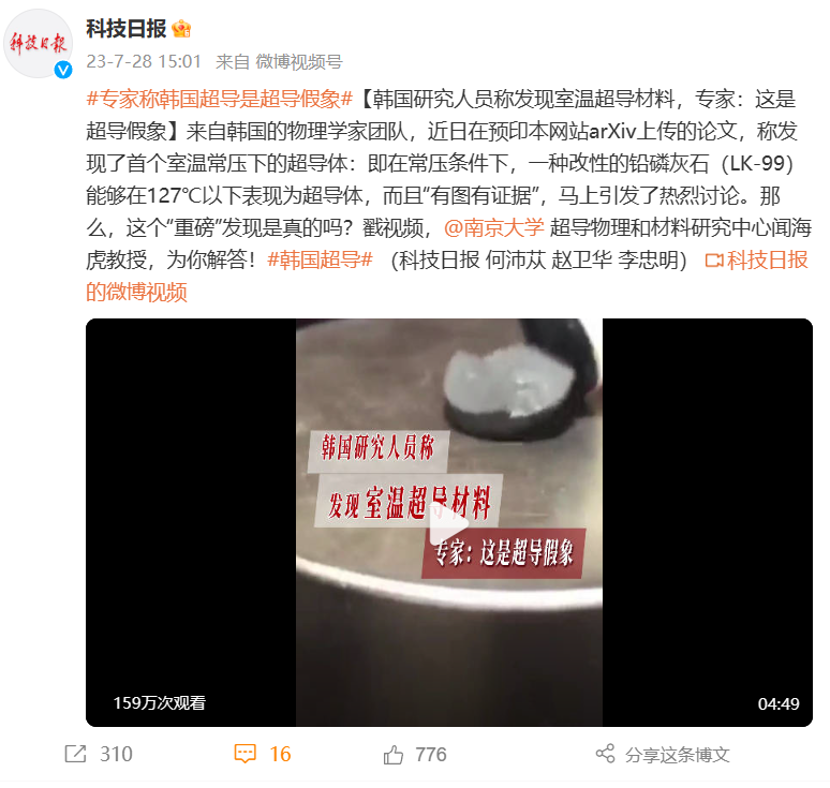
Professor Wen Haihu said on Weibo of Science and Technology Daily that the Korean team's superconductivity is an illusion of superconductivity.
However, recently, many netizens and media have come to ask me, I heard that a research group has reproduced the results of the Korean team, what is going on? A reporter quoted that research groups in China, the United States and Russia have reproduced the results of the South Korean team. China and Russia are experiments, and the United States is theory. It sounds like there's a lot of support for room-temperature superconductivity?
It seems that this kind of problem has a certain typicality, so I will briefly explain it here. The most basic answer is that this statement may be misunderstood the word "recurrence" . If it is said that someone has reproduced the magnetic properties of this material, it can be established. It is completely untenable to say that someone has reproduced the room-temperature superconductivity of this material.
We can use an analogy to compare the rarity of various properties of materials to the level of playing Go. For example, having diamagnetism is the initial stage (most materials have diamagnetism, such as water, someone can levitate a frog with a magnetic field because water has diamagnetism), and having ferromagnetism (such as iron, cobalt, nickel) is There are three stages of conventional superconductivity (superconductivity below 40 K, which can be explained by BCS theory, such as mercury, niobium and three tin) and five stages, with high-temperature superconductivity (beyond 40 K, BCS theory is not enough to explain, and some It is explained by a theory that is still unclear. For example, the copper oxide superconductivity discovered in 1986 and the iron-based superconductivity discovered in 2008) are seven segments, then the room temperature superconductivity can be regarded as nine segments (not yet realized, many people are in Try to achieve this goal by increasing the pressure), while room temperature and normal pressure superconductivity can be counted as ten stages (much more difficult than room temperature superconductivity under high pressure, and there is no theoretical guidance at all).
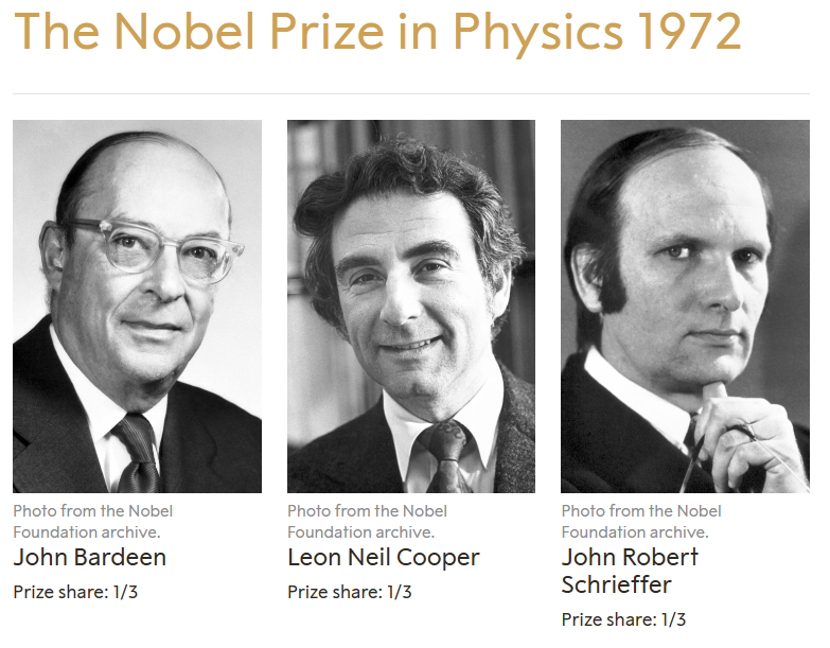
1972 Nobel Prize in Physics (https://www.nobelprize.org/prizes/physics/1972/summary/).
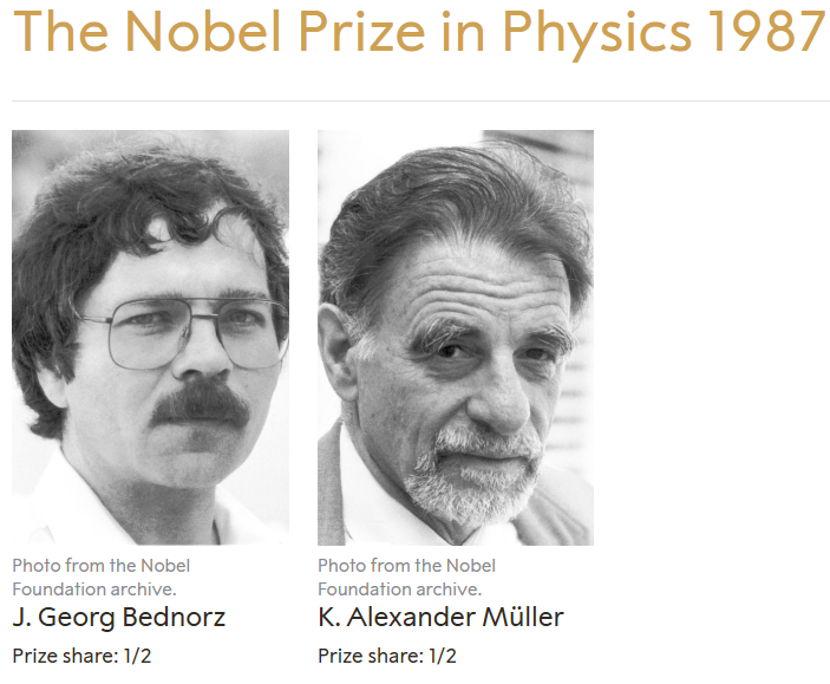
The 1987 Nobel Prize in Physics was awarded to two scientists who discovered cuprate superconductivity (https://www.nobelprize.org/prizes/physics/1987/summary/).
Using this analogy, it can be said that Korean scientists claim that their materials have reached ten paragraphs, but according to Mr. Wen Haihu's analysis, it seems that at present it is only three paragraphs at most. This material must have some kind of magnetism, whether it is diamagnetic or ferromagnetic still needs more experimental data. Those so-called experimental reproductions are all at this level, saying that it is magnetic, but no one denies that it is magnetic? What really matters, however, is that it claims to have reached Dan 10, but now there is absolutely no evidence that it has reached Dan 5, let alone Dan 10 . So I find it interesting why so many people boil over a three-parameter experimental evidence that they mistake for a ten-paragraph.
And one more thing worth emphasizing is: At present, including the original papers and "reproduced" results, none of them have been published in formal scientific journals after peer review. And peer review is the first step in identifying "Duan". Papers that have not been peer-reviewed can only be regarded as "posts" on the Internet. That said, no tiers can be confirmed yet.
In terms of experiments, why the evidence of Korean scientists is not enough to prove that this material is superconducting, I have already explained twice in the previous two articles, so I won’t go into details here. In terms of theory, as the reporter asked, the so-called Lawrence Berkeley National Laboratory of the United States submitted a paper, using the computing power of the US Department of Energy to perform simulations, and found a theoretical basis for the superconductivity of this material. This question may be worth interpreting carefully, because I am a theoretical person, and I have a relatively good understanding of where the public is easily confused.
First of all, the most basic, this article does not "reproduce" that this material has superconductivity, let alone room temperature superconductivity. What it says is that the calculations show that the material has some properties (flat energy bands) that empirically correlate relatively well with superconductivity, so this is good for superconductivity. That's all. To use the previous analogy of playing Go, I feel that it is possible for you to reach the fifth rank, but this is only a possibility, and there is no shadow of the tenth rank .
However, this article does not represent the official attitude of Lawrence Berkeley National Laboratory, because it is just a preprint (not a formal paper) sent by a researcher of this laboratory. For example, if I did a calculation, wrote a manuscript and sent it to arXiv, can it be said that I represent the attitude of the University of Science and Technology of China? Of course not.
As for the use of the computing power of the US Department of Energy, it also sounds like an endorsement by an authoritative organization to the layman. In fact, it can’t explain anything, because it’s just renting someone’s computer time. For example, if I do a calculation on China's supercomputer "Sunway TaihuLight", I can say that Sunway TaihuLight supports my result. Is this okay? Of course not, because people are only providing computing power, and it is entirely up to the user whether it is correct or not.

The light of Sunway Taihu Lake.
Finally, if you are interested in computational chemistry theory, I can talk about some professional interpretations. The title of this article is "Origin of correlated isolated flat bands in copper-substituted lead phosphate apatite" (Origin of correlated isolated flat bands in copper-substituted lead phosphate apatite), the basic content is that the author has done density functional According to the calculation of density functional theory, it is found that this material has correlated flat bands at the Fermi level, which is a common signature of high-temperature superconducting materials.
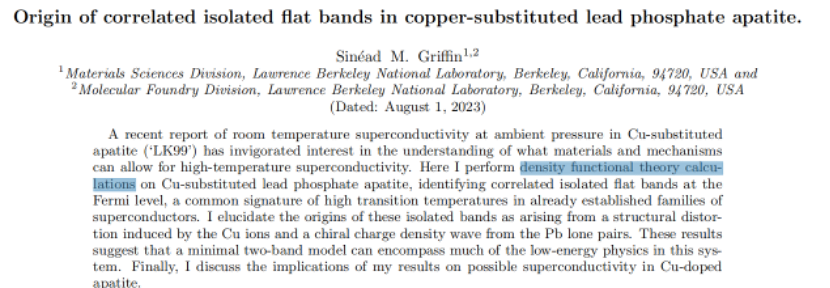
Origin of correlated isolated flat energy bands in copper-substituted lead phosphate apatite
People who have studied computational chemistry will understand that the energy band is a language of mean field approximation (mean field means, assuming that for an electron, the influence of other electrons can be described as an average field, and with these electrons The instantaneous position is irrelevant, so that the movement of each electron can be considered separately). The opposite of the mean field is called strong correlation (that is, the movements of multiple electrons are related to each other and cannot be separated), and strong correlation will add great difficulty to the calculation. Superconductivity is a strongly correlated phenomenon , and there is currently no accurate calculation method for the strongly correlated phenomenon.
Therefore, superconductivity cannot be reliably predicted with such calculations. At most, it can only be said that this kind of result obtained under this approximate theory is conducive to the emergence of superconductivity, but it is not true superconductivity, so it cannot be calculated.
And people who have studied superconducting theory also know that BCS theory has a McMillan limit, which means that the superconducting transition temperature under normal pressure cannot exceed 40 K. Over 40 K is high-temperature superconductivity, and the theory of high-temperature superconductivity is not clear until now. Therefore, even if a material is predicted to be superconducting through mean-field calculations, it can only be predicted quantitatively when the superconducting transition temperature is lower than 40 K. If it exceeds 40 K, it is still at a loss.
Therefore, even if the results of this theoretical article are correct, the significance is very limited. Its distance from explaining room temperature and normal pressure superconductivity is like the distance between saying that someone "may play Go" and saying that this person "is already the world's number one player". This is not called "recurrence" at all.
Do you understand?
(The author, Yuan Lanfeng, is the deputy director of the Science Communication Research Center of the Chinese Academy of Sciences, the deputy director of the Science and Technology Communication Department of the University of Science and Technology of China, the associate researcher of the Hefei National Research Center for Physical Science at the Microscale of the University of Science and Technology of China, and the president of the Society of Science and Technology and Strategy. The original title " Scientists from China, the United States and Russia have reproduced South Korea’s room-temperature superconductivity? You may have misunderstood the "reappearance"|Yuan Lanfeng", this article was first published on the "Voice of Wind and Cloud" WeChat official account, which was reprinted with the authorization of the author.)
